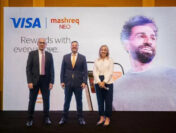 Ecommerce sales growth will continue to dominate marketing objectives in 2018. A recent report by the Ecommerce Foundation anticipates online sales value to grow to USD 2.77 billion globally. With several events lined up for the year, here are some tips on how to take advantage of them, leverage retargetting campaigns to meet goals and grow sales figures easily.
Ecommerce sales growth will continue to dominate marketing objectives in 2018. A recent report by the Ecommerce Foundation anticipates online sales value to grow to USD 2.77 billion globally. With several events lined up for the year, here are some tips on how to take advantage of them, leverage retargetting campaigns to meet goals and grow sales figures easily.
Preparing an ecommerce calendar for marketing and sales departments can give retail brands a major leg up on the competition, both for online and offline success. With leading retail brands choosing retargetter campaigns to drive customer traffic in their physical stores and web-store sales figures, the best results will be achieved when each individual campaign leads to one consistent message.
Below are some of this year’s top anticipated ecommerce events, and how brands can prepare for them well in advance.
#1. Sporting Events: Consistent Campaigns
In 2014, the Winter Olympics and FIFA World Cup reached 2.1 billion and 3.2 billion in audience reach respectively. 2018 will be record-breaking in the e-commerce industry. The 2018 Olympic Winter Games will begin in Pyeong Chang, South Korea. During the summer, Russia will hold the 2018 FIFA World Cup.
Sports events generate loads of specialized consumer traffic in various e-commerce sectors. For example, growth in electronic sales (especially TVs) and sports retail takes off before and after these major world events. Fashion (team colors), sports equipment, cosmetics (with athlete branding), beverages, food delivery and many others can be particularly successful around these events.
While many e-shops prepare complex, special campaigns and promotions for these sport events, market activities work best if they provide comprehensive, omnichannel experience with consumers. Retargetting campaigns can match the preferences and behavioral profile of a user, delivering a layer of personalization on top of special campaigns. For example, Winter Olympics promotions may see specially prepared retargetting creatives, using event visuals but products and recommendations that are displayed on a per-user basis. Mailing communication and social recommendations can match these campaigns, ensuring a highly visible, cohesive and efficient campaign.
#2. Holiday Events: Parameters Geared Towards Loyalty
The e-commerce market flourishes before holidays. Before the biggest holidays, customers often browse through many shops looking for presents. Their purchase profile is uniquely different from normal shopping, primarily because they are (a) searching for reviews or inspiration (b) aren’t shopping for themselves and (c) visiting shops they’ve never visited before.
During this period, stores want to reach as many new potential customers as possible, converting first time visitors into loyal buyers. With a retargeting engine, marketers can plan extraordinary campaigns dedicated to this user group. For example, specific campaign goals and ROI targets can be applied to different user segments, boosting efficiency and optimizing audience reach. As well as preparing special sequence of campaign with creatives targeted at new customers that, besides personalized product selection, will support brand awareness.
#3. Personal Events: Predicting Customer Intent
Special events contribute to a large chunk of ecommerce sales value. Whether it’s birthdays, anniversaries, or smaller holidays, the act of getting gifts for loved ones will always be an opportunity for brands.
Consumers across the world tend to spend a lot of time and money findings gifts for Valentine’s Day (February 14), Mother’s Day (March 21), Father’s Day (June 21), Children’s Day (November 20) and Women’s Day (March 8).
For example, 2010 saw constant growth in total spending on Mother’s Day. Last year, we witnessed record breaking growth from USD 21.4 billion to around USD 23.6 billion, which suggests that 2018 will be no different and budgets will be even higher for each customer.
As we strive to find special gifts with personal touch for our dear ones, we tend to be more affected by unique, personalized ads. For this reason, to maximize the outcome in retargetting, marketers use advanced user segmentation based on purchasing intentions of users. Retargetters can segment customers into many groups based on their searches (e.g. browsing through electric shavers before Father’s Day, we can assume it is a search for a present). A strong campaign would display personalized creatives with the product category that he or she is interested in. At the same time, the banners will be in line with generic activities dedicated to Father’s Day. A campaign tailored for each user is more effective, allowing marketers to achieve better results within the same budget.
#4. Seasonal Promotions: Re-Engage Users
Special shopping events and seasonal events are also very important factors for driving sales value through the year. Days like White Friday and Cyber Monday are catching on globally. These kinds of seasonal and special ecommerce events mark an opportunity for marketers to re-connect with old clients, who visited their store long time ago. With special occasions and promotions, it is possible to re-engage with them again and convince them to make purchase.
Marketers need to remember that users who do shopping during seasonal sales or free shipping day are not only interested in new offers. They often visit a website earlier and come back only when they see promotions. That is why advertisers should remind them about the products they were previously interested in. By using retargetting, marketers can also increase campaign’s efficiency after events like White Friday. Re-engaging with customers after they made a purchase during a particular event can be achieved with creatives that have complimentary products. In the long-term, these creatives can be displayed afterwards and this way the contact with customer is sustained for longer.
2018 Will Be The Biggest Year Yet For Ecommerce
This year will be full of possibilities for e-shops to engage with customers from traditional, yearly events like White Friday to special, international events like the FIFA World Cup taking place every four years.
Each of them is a great moment for marketers to engage with customers, attract them and to grow sales and revenues. Advertisers should plan ahead to make their campaigns leverage personalization and precise targeting to get optimal results.
When creating a campaign, get advice from specialized account managers for each of these events. They can adjust campaign goals and parameters for event specifics, choose the best solutions for a particular industry and tailor the message to user target groups. Use this year’s opportunities to achieve biggest success so far.




